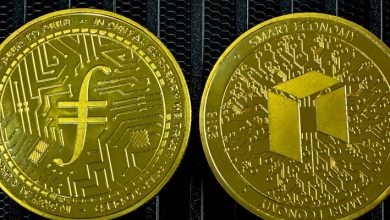How to Compare Layer 1 and Layer 2 Tokens

- Understanding the basics of Layer 1 and Layer 2 tokens
- Key differences in functionality between Layer 1 and Layer 2 tokens
- Scalability considerations for Layer 1 and Layer 2 tokens
- Security implications of using Layer 1 vs Layer 2 tokens
- User experience comparison: Layer 1 vs Layer 2 tokens
- Factors to consider when choosing between Layer 1 and Layer 2 tokens
Understanding the basics of Layer 1 and Layer 2 tokens
Layer 1 and Layer 2 tokens are essential components of the blockchain ecosystem. Layer 1 tokens are native to their respective blockchain and are used for various purposes such as transactions, smart contracts, and governance. Layer 2 tokens, on the other hand, are built on top of existing blockchains to enhance scalability and functionality.
Layer 1 tokens operate directly on the main blockchain network, which can sometimes lead to scalability issues due to the limited processing power of the network. In contrast, Layer 2 tokens utilize off-chain solutions to improve scalability, such as sidechains or state channels. This allows for faster and more cost-effective transactions without congesting the main blockchain.
Understanding the basics of Layer 1 and Layer 2 tokens is crucial for anyone looking to compare and evaluate different blockchain projects. Layer 1 tokens are typically more decentralized and secure since they operate directly on the main blockchain. However, they may face scalability issues during times of high network activity.
On the other hand, Layer 2 tokens offer enhanced scalability and efficiency by offloading transactions from the main blockchain. While they may sacrifice some decentralization for speed, Layer 2 solutions are essential for addressing the scalability challenges faced by many blockchain networks.
In summary, Layer 1 tokens are native to their respective blockchains and operate directly on the main network, while Layer 2 tokens are built on top of existing blockchains to improve scalability. Both types of tokens play a crucial role in the blockchain ecosystem and offer unique advantages and trade-offs. By understanding the differences between Layer 1 and Layer 2 tokens, investors and developers can make more informed decisions when evaluating blockchain projects.
Key differences in functionality between Layer 1 and Layer 2 tokens
Layer 1 and Layer 2 tokens have key differences in functionality that are important to understand when comparing the two. Layer 1 tokens operate directly on the underlying blockchain network, while Layer 2 tokens are built on top of Layer 1 protocols to enhance scalability and efficiency.
One of the main differences between Layer 1 and Layer 2 tokens is that Layer 1 tokens are typically used for basic transactions and smart contracts on the main blockchain network, such as Ethereum or Bitcoin. On the other hand, Layer 2 tokens are designed to offload some of the transaction volume from the main network, allowing for faster and more cost-effective transactions.
Layer 1 tokens are more secure and decentralized since they operate directly on the main blockchain network. In contrast, Layer 2 tokens rely on the security of the underlying Layer 1 network but can offer additional features like faster transaction speeds and lower fees.
Overall, the choice between Layer 1 and Layer 2 tokens depends on the specific use case and requirements of a project. Layer 1 tokens are ideal for applications that require the highest level of security and decentralization, while Layer 2 tokens are better suited for projects that need to scale and optimize transaction throughput. By understanding these key differences in functionality, developers and users can make informed decisions when choosing between Layer 1 and Layer 2 tokens for their projects.
Scalability considerations for Layer 1 and Layer 2 tokens
When comparing Layer 1 and Layer 2 tokens, one crucial aspect to consider is scalability. Scalability refers to the ability of a blockchain network to handle an increasing number of transactions as the network grows. Both Layer 1 and Layer 2 tokens have their own scalability considerations that need to be taken into account.
Layer 1 tokens, which operate directly on the underlying blockchain network, are subject to the scalability limitations of that network. For example, popular Layer 1 blockchains like Ethereum have faced challenges with network congestion and high transaction fees during times of heavy usage. This can affect the scalability of Layer 1 tokens built on these networks.
On the other hand, Layer 2 tokens operate on top of Layer 1 networks and can benefit from their scalability solutions. Layer 2 solutions such as sidechains and state channels can help offload transactions from the main blockchain, increasing scalability and reducing congestion. This can make Layer 2 tokens more scalable than their Layer 1 counterparts.
When comparing Layer 1 and Layer 2 tokens for scalability, it is important to consider the specific scalability solutions implemented by each type of token. Understanding how these solutions impact transaction speed, cost, and overall network performance can help determine which type of token is better suited for a particular use case. By carefully evaluating scalability considerations, stakeholders can make more informed decisions when choosing between Layer 1 and Layer 2 tokens for their projects.
Security implications of using Layer 1 vs Layer 2 tokens
When considering the security implications of using Layer 1 versus Layer 2 tokens, it is essential to understand the key differences between the two. Layer 1 tokens operate directly on the underlying blockchain, meaning that any security vulnerabilities in the blockchain itself could potentially impact the token. On the other hand, Layer 2 tokens are built on top of Layer 1 solutions, which can provide an added layer of security.
Layer 1 tokens are typically more decentralized than Layer 2 tokens, as they rely solely on the security of the underlying blockchain. However, this decentralization can also make them more susceptible to attacks, as any weaknesses in the blockchain can be exploited to compromise the token. In contrast, Layer 2 tokens benefit from the security features of the Layer 1 solution they are built on, providing an extra layer of protection against potential threats.
It is important to consider the trade-offs between security and decentralization when choosing between Layer 1 and Layer 2 tokens. While Layer 1 tokens offer a high level of decentralization, they may be more vulnerable to security risks. Layer 2 tokens, on the other hand, provide added security through their reliance on Layer 1 solutions, but may sacrifice some decentralization in the process.
Ultimately, the choice between Layer 1 and Layer 2 tokens will depend on the specific security needs of the project. It is important to carefully consider the security implications of each option and choose the one that best aligns with the project’s goals and objectives. By weighing the trade-offs between decentralization and security, project teams can make an informed decision that helps mitigate potential risks and protect their token holders.
User experience comparison: Layer 1 vs Layer 2 tokens
The user experience when interacting with Layer 1 and Layer 2 tokens can vary significantly. Layer 1 tokens, such as those built on blockchain networks like Ethereum, are known for their security and decentralization. However, they can also suffer from high transaction fees and slower processing times due to the congestion on the network.
On the other hand, Layer 2 tokens, which operate on top of Layer 1 blockchains, offer a more efficient and cost-effective user experience. These tokens benefit from the security of the underlying Layer 1 blockchain while enabling faster transactions and lower fees. This makes them a popular choice for users looking to interact with decentralized applications (dApps) without the drawbacks of Layer 1 tokens.
When comparing the user experience of Layer 1 and Layer 2 tokens, it is essential to consider factors such as transaction speed, cost, and security. Layer 1 tokens may provide a more robust level of security due to their direct connection to the underlying blockchain. However, Layer 2 tokens can offer a more seamless and affordable user experience, making them a preferred choice for many users.
Ultimately, the choice between Layer 1 and Layer 2 tokens will depend on the specific needs and preferences of the user. Some users may prioritize security and decentralization, while others may prioritize speed and cost-effectiveness. By understanding the differences between Layer 1 and Layer 2 tokens, users can make informed decisions about which option best suits their individual requirements.
Factors to consider when choosing between Layer 1 and Layer 2 tokens
When deciding between Layer 1 and Layer 2 tokens, there are several key factors to consider that can help you make an informed decision. One important factor to keep in mind is scalability. Layer 2 tokens are often touted as a solution to scalability issues faced by Layer 1 tokens. By moving transactions off-chain, Layer 2 tokens can increase the throughput of the network and reduce congestion. However, Layer 1 tokens are often seen as more secure and decentralized due to their direct connection to the underlying blockchain.
Another factor to consider is security. Layer 1 tokens are typically more secure than Layer 2 tokens because they operate directly on the underlying blockchain. This direct connection to the blockchain can make Layer 1 tokens less susceptible to attacks and vulnerabilities. On the other hand, Layer 2 tokens rely on Layer 1 for security, which can introduce additional risks.
In addition to scalability and security, it’s important to consider the level of decentralization offered by each type of token. Layer 1 tokens are often considered more decentralized than Layer 2 tokens because they operate directly on the blockchain without any intermediaries. This can make Layer 1 tokens more censorship-resistant and resilient to attacks. Layer 2 tokens, on the other hand, rely on Layer 1 for security and can be more centralized in nature.
Ultimately, the decision between Layer 1 and Layer 2 tokens will depend on your specific needs and priorities. If scalability and speed are your main concerns, Layer 2 tokens may be the right choice for you. However, if security and decentralization are more important, Layer 1 tokens may be the better option. It’s important to carefully weigh these factors and consider how they align with your goals and values before making a decision.




